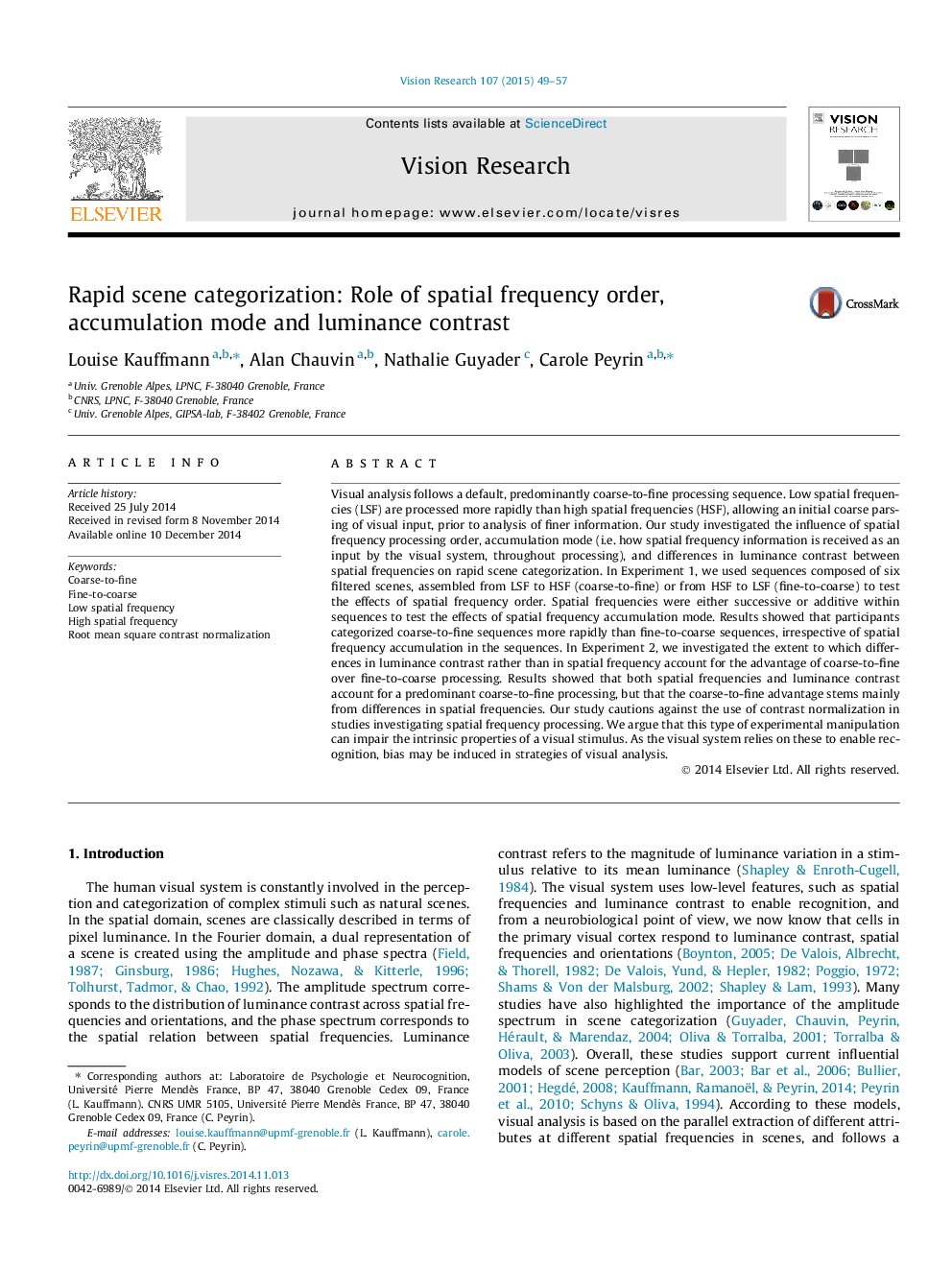| Article ID | Journal | Published Year | Pages | File Type |
|---|---|---|---|---|
| 6203369 | Vision Research | 2015 | 9 Pages |
â¢Scene categorization is favored by processing low before high spatial frequencies.â¢Spatial frequency (SF) order is more important than the amount of SF information.â¢The advantage of coarse-to-fine processing is driven by SF rather than contrast.
Visual analysis follows a default, predominantly coarse-to-fine processing sequence. Low spatial frequencies (LSF) are processed more rapidly than high spatial frequencies (HSF), allowing an initial coarse parsing of visual input, prior to analysis of finer information. Our study investigated the influence of spatial frequency processing order, accumulation mode (i.e. how spatial frequency information is received as an input by the visual system, throughout processing), and differences in luminance contrast between spatial frequencies on rapid scene categorization. In Experiment 1, we used sequences composed of six filtered scenes, assembled from LSF to HSF (coarse-to-fine) or from HSF to LSF (fine-to-coarse) to test the effects of spatial frequency order. Spatial frequencies were either successive or additive within sequences to test the effects of spatial frequency accumulation mode. Results showed that participants categorized coarse-to-fine sequences more rapidly than fine-to-coarse sequences, irrespective of spatial frequency accumulation in the sequences. In Experiment 2, we investigated the extent to which differences in luminance contrast rather than in spatial frequency account for the advantage of coarse-to-fine over fine-to-coarse processing. Results showed that both spatial frequencies and luminance contrast account for a predominant coarse-to-fine processing, but that the coarse-to-fine advantage stems mainly from differences in spatial frequencies. Our study cautions against the use of contrast normalization in studies investigating spatial frequency processing. We argue that this type of experimental manipulation can impair the intrinsic properties of a visual stimulus. As the visual system relies on these to enable recognition, bias may be induced in strategies of visual analysis.
